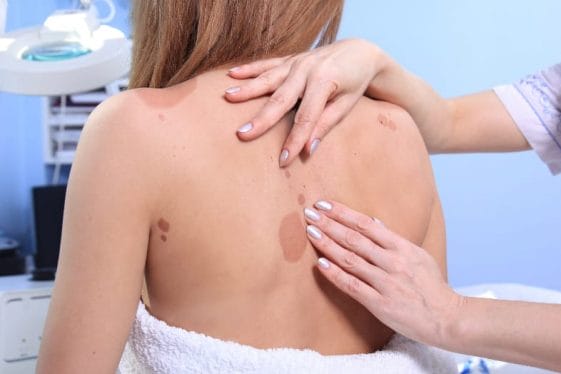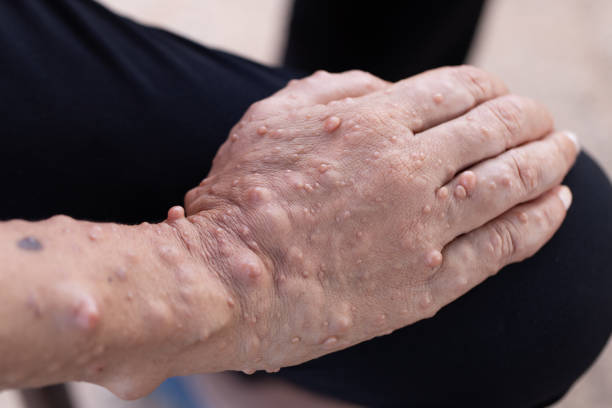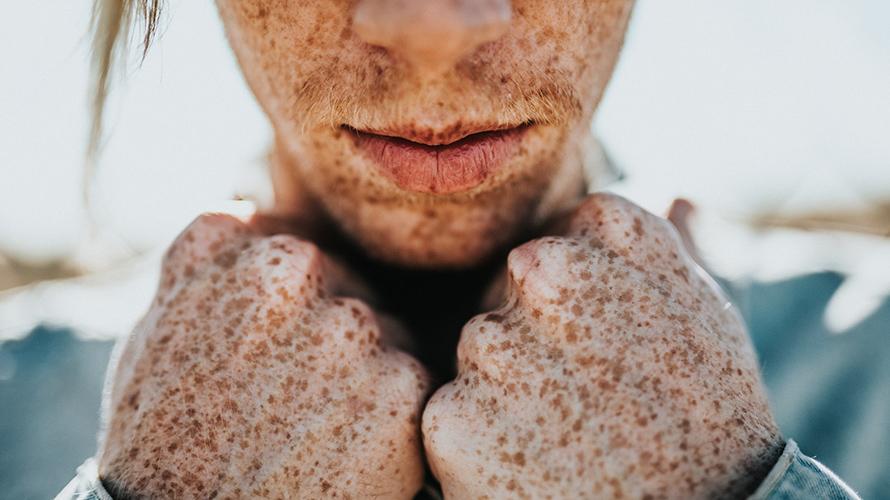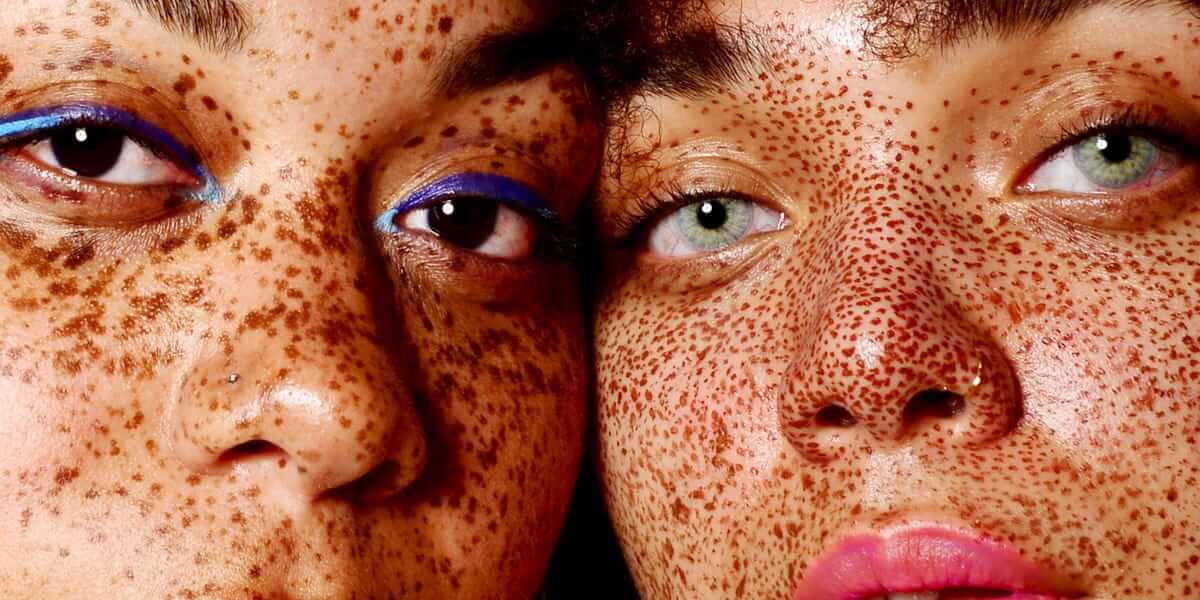A neurofibromatosis is a group of genetic conditions that causes tumor formation on the nerves, brain, spinal cord, and skin. These tumors are generally non-cancerous (benign) although some tumors may develop cancerous changes (malignancies).
Neurofibromas is not a form of cancer. Neurofibromas are tumors (abnormal growths) but are usually benign (not likely to spread to other places in the body).
However, cancerous changes can occur in certain types of neurofibromas, especially a plexiform neurofibroma that can turn into a sarcoma (a soft tissue tumor). A rare type of sarcoma is a malignant peripheral nerve sheath tumor (MPNST), which is very serious and can be life threatening.
Patients with NF1, especially children, have a higher-than-average risk of developing a glioma (a nervous system tumor). Gliomas are most likely to appear in a child with neurofibromas who is 4 and 5 years old. In most cases, these tumors are low grade and manageable.
The three types of neurofibromatosis include:
Neurofibromatosis type 1 (NF1):
Also called von Recklinghausen disease, it is the most common type of neurofibromatosis that affects 1 in 3,000 births. It is generally diagnosed during childhood.
- Neurofibromatosis most often seen in patients with NF1, appear as multiple, rubbery lumps on or under the skin. They may be painful or itchy, but many do not cause any other symptoms.
- Vestibular schwannomasare most common in patients with NF2. These tumors affect the nerves of the inner ear and disrupt hearing and balance.
Neurofibromatosis type 2 (NF2):
Also called central neurofibromatosis or bilateral acoustic neurofibromatosis and affects about 1 in 25,000 births. Both NF1 and NF2 are genetic conditions that affect nerve tissue, but NF1 and NF2 have different symptoms. NF1, far more common than NF2, is characterized by brownish cafe-au-lait spots on the skin and tumors called neurofibromas. NF1 can also cause deformity of bones and has several other manifestations. The abnormal nerve growths of NF2 more frequently affect the nerves inside the skull and spine, and common symptoms include problems regarding hearing, balance and control of facial muscles.
Schwannomatosis (SWN):
Schwannomatosis is associated with painful tumors called schwannomas that can cause pain, tingling and weakness. SWN is generally diagnosed when an individual is in their 20s.
Signs and symptoms
Signs and symptoms of neurofibromatosis may vary from person to person.
Signs and symptoms of neurofibromatosis type 1
- Symptoms begin soon after birth or early childhood.
- Café au lait spots (light brown spots measuring 5 to 15 mm; six or more in number).
- Freckling of the arms and groin region (red or brown color of skin).
- Multiple neurofibromas (small, painless tumors seen as nodular swellings or felt under the skin).
- Vision problems (seen in case of optic gliomas or tumors that affect the nerves of the eyes).
- Plexiform neurofibroma (a large, disfiguring tumor formed due to multiple nerve involvement)
- Lisch nodules (small tumors that affect the iris [colored part of the eye], seen on eye examination).
- Weakness.
- Learning problems and delayed milestones including delayed speech or walking.
- Macrocephaly (the head appears larger than normal).
- High blood pressure.
- Bone abnormalities such as bowing of the shinbone or abnormal curvature of the spine.
Other signs of Neurofibromatosis type-1 include:
- Lisch nodules, which are tiny bumps that appear on the iris (the colored part of the eye). They are common in people with NF1.
- Clusters of freckles under the arms, or in skin folds and creases.
- Six or more cafe-au-lait spots, which are tan or brown patches on the skin.
Signs and symptoms of neurofibromatosis type 2

- Symptoms usually begin in teens.
- Hearing loss (caused by acoustic neuroma or tumors that grow in the ears).
- Problems with balancing.
- Tinnitus (ringing in the ears).
- Vision problems.
- Cataract (opacification of the eye lens)
- Headache.
- Multiple tumors on or under the surface of the skin.
- Weakness or numbness in the limbs.
- Seizures.
Signs and symptoms of schwannomatosis
- Symptoms start in adulthood (the 20s).
- Chronic (long term) pain that affects any part of the body.
- Muscle weakness.
- Tingling, numbness, or weakness in the fingers and toes.
- Tumors limited to a particular part of the body such as the arm, leg, or a particular spinal region.
Diagnosis
Neurofibromatosis disorders are often diagnosed by a doctor’s examination of the patient and genetic testing.
After a careful history and examination, the doctor may order several tests including the following.
- MRI
- Electromyography (EMG)/nerve conduction study (NCS), to measure electrical pathways in the nerves.
- A biopsy, so that a pathologist can diagnose a neurofibroma or schwannoma by looking at a piece of the tumor under a microscope.
Can neurofibromatosis be cured?
With Homeopathy – YES.
With allopathy – presently, there is no cure for any type of neurofibromatosis in allopathy.
According to allopathic scientists, mild cases of NF1, NF2 and schwannomatosis do not cause severe problems, and affected people may require no treatment beyond observation and regular checkups and symptom management. Conditions, however, can be treated and managed for an improved quality of life; which is I (Dr Qaisar Ahmed MD, DHMS) think is absolutely wrong; every disease should be treated in its starting/acute stages to avoid later complications.
Allopathic treatment generally focuses on managing symptoms (such as pain, headache, and seizures) and preventing complications.
For allopathic treatment, generally, a multidisciplinary team is required, which consists of:
- Internists
- Neurologists
- Orthopedic surgeons
- Ophthalmologists
- Ear, nose, and throat surgeons
- Neurosurgeons
A new allopathic drug “Selumetinib” prevents the growth of tumor cells, but it has too many and severe side effects.

Various clinical trials are underway to develop improved allopathic treatment options for neurofibromatosis, including MEK inhibitors — drugs that block a protein associated with abnormal cell growth. With allopathy, tumors and bone changes caused by neurofibromatosis can only be treated with surgical methods.
If a schwannoma or neurofibroma causes significant pain or loss of neurological function, compresses a nearby structure or shows rapid growth on imaging, the doctor may recommend removing it surgically and/or by using radiation.
Depending on the tumor location and size, surgery for neurofibromas is very sensitive and is critical danger for patient’s health and organs because of its involvement with the nerve; removal can be challenging and require the skill of an experienced surgeon who specializes in nerve tumors.
Homeopathic treatment for Neurofibromas
For the treatment of neurofibromas, homeopathic medicines are prescribed only on the basis of TOTALITY OF SYMPTOMS with a clear-cut identification of disease.
Here are few homeopathic medicines for neurofibromas with good and promising results:
Thuja Occidentalis
Acts on skin, blood, gastrointestinal tract, kidneys, and brain. Its relation to the production of pathological vegetations condylomas, warty excrescences, spongy tumors is very important. Moist mucous tubercles. Bleeding fungus growths. Naevus. Excess of vinosity. inflammation of sclera. Sclera raised in patches, and looks bluish red. Large, flat phlyctenules; indolent. Recurring episcleritis. Chronic scleritis. Piles swollen; pain worse sitting, with stitching, burning pains at the anus. Anus fissured; painful to touch with warts. Warty excrescences on body, Polypi, tubercles, warts epithelioma, naevi, carbuncles; ulcers, especially in anogenital region, skin, with brown spots. Zona; herpetic eruptions. Sarcoma; polypi. Brown spots on hands and arms. Freckles and blotches. polypus.
Silica Tera
Diseases of bones, caries and necrosis. Silica can stimulate the organism to re-absorb fibrotic conditions and scar-tissue. Swelling of lacrimal duct. Aversion to light. Fetid discharge from ears. Caries of mastoid. Sensitive to noise. Roaring in ears. Fissures and hemorrhoids, painful, with spasm of sphincter. On skin felons, abscesses, boils, old fistulous ulcers. Cracks at end of fingers. Painless swelling of glands. Rose-colored blotches. Scars suddenly become painful.
Promotes expulsion of foreign bodies from tissues. Every little injury suppurates. Long lasting suppuration and fistulous tracts. Dry fingertips. Eruptions. Crippled nails. Indurated tumors. Abscesses of joints. Side effects of vaccination. Bursa. Lepra, nodes, and coppery spots. Keloid growths.
Staphysigaria
Diseases of the genitourinary tract and skin, very sensitive. Lacerated tissues. Stupefying headache. Itching eruption. Lacerated or incised wounds of cornea. Stitches flying to the ear on swallowing. Swelling of submaxillary glands. Eczema; thick scabs, dry, and itch violently; scratching changes location of itching. Fig-warts pedunculated. Arthritic nodes. Inflammation of phalanges. Night-sweats.
Calcarea Carbonica
Increased local and general perspiration, swelling of glands, scrofulous and rachitic conditions. Incipient phthisis. Tickling cough, fleeting chest pains, nausea, acidity and aversion to fat. Abscesses in deep muscles; polypi and exostoses. Pituitary and thyroid dysfunction. Forgetful, confused, low-spirited. Anxiety. Severe headache. Spots and ulcers on cornea. Photophobia. Cataract. Throbbing; cracking in ears; stitches; pulsating pain. Scrofulous inflammation with muco-purulent otorrhea and enlarged glands. Perversions of hearing; hardness of hearing. Stoppage of nose, also with fetid, yellow discharge. Offensive odor in nose. Polypi; swelling at root of nose. Epistaxis. Submaxillary glands swollen. Goiter. Itching of pimples. Swelling of tonsils and submaxillary glands; stitches on swallowing. Hawking-up of mucus. Difficult swallowing. Goiter. Parotid fistula. Burning, stinging hemorrhoids. Unhealthy skin; readily ulcerating; flaccid. Small wounds do not heal readily. Glands swollen. Warts. Warts which may be fleshy, horny, painful, and offensive. Petechial eruptions.
Antimonium Crudum
Eyes dull, sunken, red, itch, inflamed, agglutinated. Canthi raw and fissured. Chronic blepharitis. Pustules on cornea and lids. Tinnitus. Deafness. Eczema. Pimples, vesicles, and pustules. Thick, hard, honey-colored scabs. Urticaria; measle-like eruption. Itching when warm in bed. Dry skin. Warts. Dry gangrene. Scaly, pustular eruption with burning and itching. Severe headache.
Dulcamara

Dulcamara has a specific action on the skin, glands, and digestive organs, mucous membranes secreting more profusely while the skin is inactive. Congestive headache, with neuralgia and dry nose. Ringworm of scalp. Scald head, thick brown crusts, bleeding when scratched. Buzzing in head. Swelling of parotid glands. Adenitis. Pruritus. Herpes zoster, pemphigus. Swelling and indurated glands. Vesicular eruptions. Sensitive bleeding ulcers. Little boils. Red spots, urticaria. Humid eruptions on face, genitals, hands, etc. Warts, large, smooth, on face and palmar surface of hands. Anasarca. Thick, brown-yellow crusts, bleeding when scratched.
Causticum
The skin of a Causticum person is of a dirty white sallow, with warts, especially on the face. Emaciation due to disease, worry, etc, and of long standing. Burning, rawness, and soreness. Warts have a soft base and horny on surface. It is suitable to many small warts. Cataract with motor disturbances. Eyelids inflammation; ulceration. Sparks and dark spots before eyes Ptosis. Vision impaired. Paralysis of ocular muscles. Ears ringing, roaring, pulsating, with deafness. Warts large, jagged, bleeding easily, on tips of fingers and nose. Skin prone to intertrigo during dentition.
Arsenic album
Itching, burning, swellings; oedema, eruption, papular, dry, rough, scaly; worse cold and scratching. Malignant pustules. Ulcers with offensive discharge. Anthrax. Poisoned wounds. Urticaria, with burning and restlessness. Psoriasis. Scirrhous. Icy coldness of body. Epithelioma of the skin. Gangrenous inflammations. Tinnitus. Lupus.
Carbo Animalis
Glands are indurated, veins distended, cyanotic. Spongy ulcers, copper-colored eruption. Acne rosacea. Chilblains. Verruca on hands and face, with bluish color of extremities. Glands indurated, swollen, painful, in neck, axillae, groin, mammae; pains lancinating, cutting, burning. Burning, rawness and fissures; moisture. Bubo.
Castor Equi
General action on thickening of the skin and epithelium. Psoriasis linguae. Highly useful medicine in cracked and ulcerated nipples. Affects principally female organs. Acts on the nails and bones; pain in right tibia and coccyx. Warts on forehead. Warts on breast. Chapped hands. Cracked, sore nipples, excessively tender. Swelling of mammae. Violent itching in breasts; areola reddened. Nails drop off. Brittle nails.
Castoreum

Chorea. Convulsions. Eclampsia. Hysteria. Ileus. Paralysis. Inflammation of sexual organs; spasms of sexual organs. Sycosis. Tetanus. Typhoid. Typhus. Warts; Jerking of small groups of muscles. Severe headache. Dragging in the ears. Tinkling, buzzing, and gurgling in the ears, dispersed by boring the ear with the finger. Swelling of tongue. Rounded elevation on tongue; painful and burning.
Antimonium Tartaricum
Pustular eruption, leaving a bluish-red mark. Smallpox. Warts. Warts on glans penis. Chills and contractures and pain in muscles.
Ferrum Picricum
Is considered a great medicine to complete the action of other medicines. Warts, flat or plane warts with irregular borders that grow on the face, neck, wrists, hands and knees etc. Prostatic enlargement. Warts and epithelial growths all-over body; corns with yellowish discoloration. Senile hypertrophy of the prostate. Epistaxis. Chronic deafness and tinnitus due to gout. Meatus dry. Pseudo leukemia. Crackling in ears and low-pitched voice. Vascular deafness. Dental neuralgia, radiating towards ears and eyes. Humming in ears. Tinnitus.
Nitricum Acidum
Special seat of action of Acidum Nitricum is the outlets of the body where the mucous membrane and skin meet; these pain as from splinters. Sticking pains. Blisters and ulcers in mouth, tongue, genitals; bleed easily. Fissures, with pain during stool, as if rectum were torn. Difficult hearing. Very sensitive to noise. Cracking in ears. Warts, large jagged; bleed on washing. Ulcers bleed easily, sensitive; splinter-like pains; zigzag, irregular edges. Exuberant granulations. Black pores on face, papules worse on forehead.
Cupressus Lawsoniana
Tumors. Cocks-comb growth in the mouth; lipoma of thigh; keloid.
Sabina
Warts, with intolerable itching and burning. Exuberant granulations. Black warts. Severe headache. Hemorrhoids. Discharge of blood between periods. Promotes expulsion of moles from uterus. Fig-warts, with intolerable itching and burning. Warts. Black pores in skin.
Magnesia sulph
Small pimples over the whole body, that itch violently. Crawling in the tips of the fingers; better on rubbing. Warts. Erysipelas. Dropsy. Eyes burn. Tinnitus – noises in ears. Stream of urine intermits and dribbles. Large lumps on body.
Natrum Sulphuricum
Itching while undressing. Jaundiced, watery blisters. Sycotic excrescences; wart-like red lumps all over body. Skin affections. Tendency to warts. Fingers and toes affected. Chronic gout. Piercing stitches in ears. Lightning pain in ears. Conjunctiva yellow. Granular lids. Photophobia. Condylomas; soft, fleshy excrescences. Swelling of axillary glands. Inflammation around root of nails. Burning in soles; oedema of feet; itching between toes. Gout. Pain in limbs, compels frequent change in position.
Natrum Muriaticum

Skin greasy, oily, especially on hairy parts. Dry eruptions, especially on margin of hairy scalp and bends of joints. Fever blisters. Urticaria; itch and burn. Crusty eruptions in bends of limbs, margin of scalp, behind ears. Warts on palms of hands. Eczema; raw, red, and inflamed; worse, eating salt, at seashore. Affects hair follicles. Alopecia. Hives, itching after exertion. Throbs. Blinding headache. Eyelids heavy. Muscles weak and stiff. Tinnitus – roaring and ringing. Dryness and cracking about fingernails. Numbness and tingling in fingers and lower extremities.
Ruta graveolens
Amblyopia. Anus, prolapse of. Bone, bruised, pains in. Bruises. Bursitis. Cartilages bruises; pains. Chest, sternum, pains in. Constipation. Dislocations. Dyspepsia. Enuresis. Epistaxis. Exostosis. Eyesight weak; pains in. Facial paralysis. Fevers. Fractures. Ganglion. Hemorrhages. Pains in hand. Paralysis. Perichondritis. Periostitis. Rectum affections. Rectal prolapse. Restlessness. Rheumatism. Sciatica. Spleen affections. Sprain. Stammering. Tongue, cramp and swelling. Difficulty of urination. Varicocele. Veins, swollen; varicose. Warts.
Natrum Carbonicum
All the Natrum stimulate cellular activity and increase oxidation and metabolism. Oversensitive of hearing. Headaches. Freckles, yellow spots, pimples. Swelling of upper lip. Pale, with blue rings around eyes and swollen lids. Old sprains. Great weakness of limbs. Eruption on fingertips, knuckles and toes. Vesicular eruption in patches and circles. Veins full. Soles of feet raw and sore.
Sepia
Herpes circinate in isolated spots. Itching; not relieved by scratching; worse in bends of elbows and knees. Chloasma; herpetic eruption on lips, about mouth and nose. Ringworm-like eruption every spring. Urticaria on going in open air; better in warm room. Hyperhidrosis and bromhidrosis. Sweat on feet, worse on toes, intolerable odor. Lentigo in young women. Ichthyosis with offensive odor of skin. Condylomas.
Phosphoric acid
Pimples, acne, blood-boils. Ulcers, with very offensive pus. Burning red rash. Formication in various parts. Falling out of the hair. Tendency to abscess after fevers. Roaring, with difficult hearing. Intolerant of noise. Amblyopia. Optic nerves seem torpid. Ears roaring, with difficult hearing. Intolerant of noise. Edema of prepuce, and swollen glans-penis. Herpes preputialis. Sycotic excrescences.
P. S: This article is only for doctors having good knowledge about Homeopathy and allopathy, for learning purpose(s).
For proper consultation and treatment, please visit our clinic.
None of above-mentioned medicine(s) is/are the full/complete treatment, but just hints for treatment; every patient has his/her own constitutional medicine.
To order medicine by courier, please send your details at WhatsApp– +923119884588

Dr. Sayyad Qaisar Ahmed (MD {Ukraine}, DHMS), Abdominal Surgeries, Oncological surgeries, Gastroenterologist, Specialist Homeopathic Medicines.
Senior research officer at Dnepropetrovsk state medical academy Ukraine.
Location: Al-Haytham clinic, Umer Farooq Chowk Risalpur Sadder (0923631023, 03119884588), K.P.K, Pakistan.
Find more about Dr Sayed Qaisar Ahmed at:
https://www.youtube.com/Dr Qaisar Ahmed
https://www.facebook.com/ahmed drqaisar
